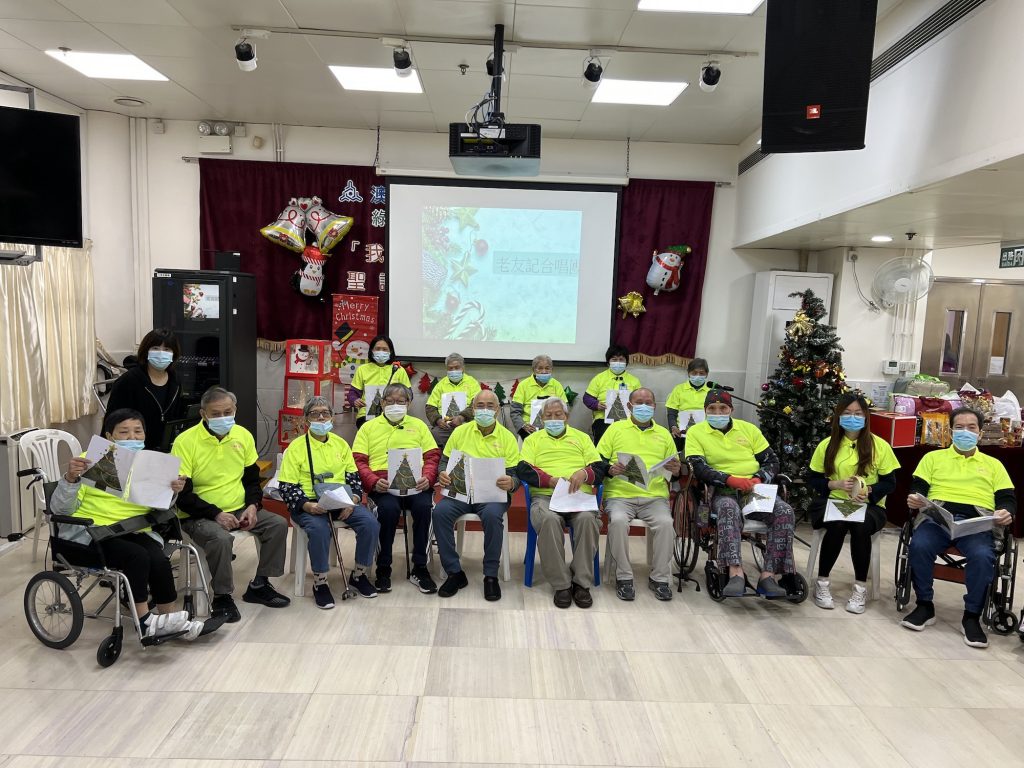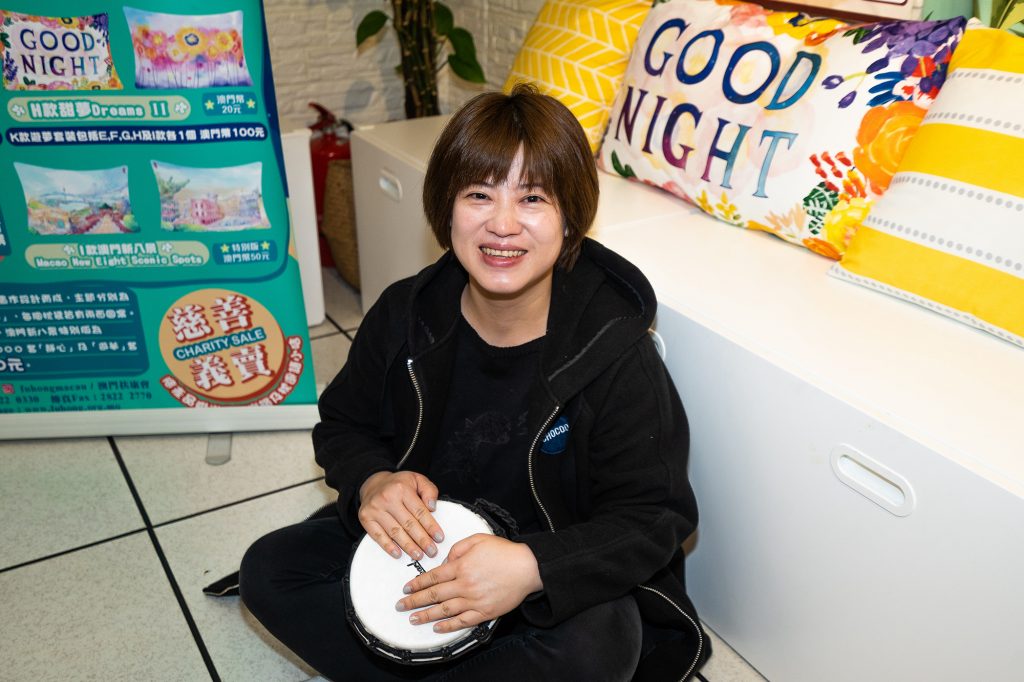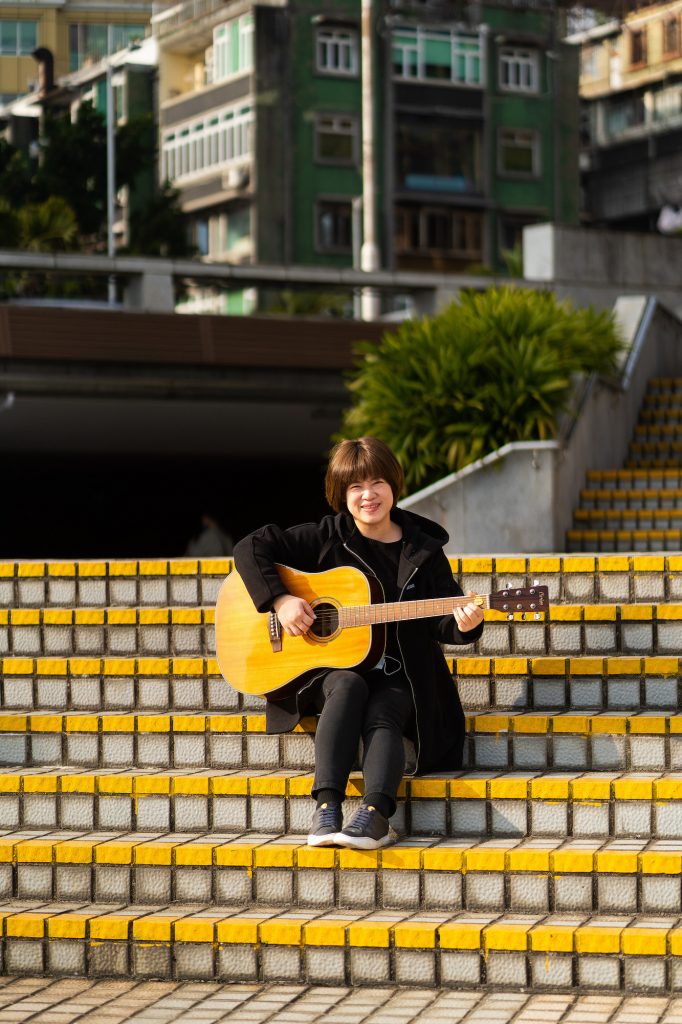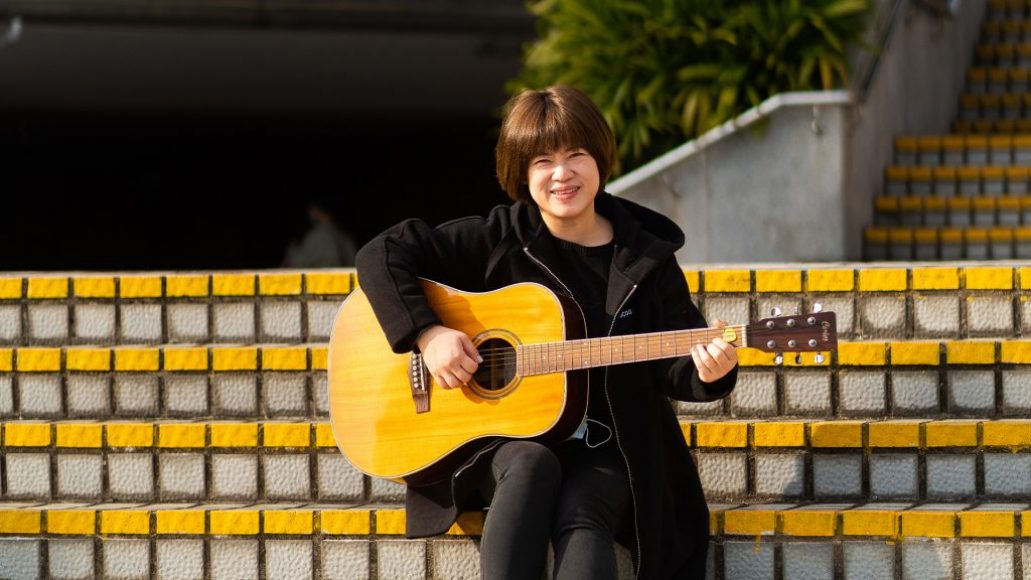Music’s power to stir or still human emotions was already noticed in ancient times. The Chinese philosopher Confucius wrote: “Music produces a kind of pleasure which human nature cannot do without.” Whether making music or simply listening to it has a power to bring us together, lift our spirits, calm our nerves and soothe our wounds. Its healing effects in a clinical setting were recognised at least as early as 1789, when music therapy emerged in the US.
According to the American Music Therapy Association, the practice harnesses music-based treatments to help people with everything from developmental issues to depression, insomnia, substance abuse, mood disorders and rehabilitation. It is particularly helpful for patients with dementia or Parkinson’s disease, as well as children with learning disabilities or behavioural concerns.
Local practitioner 37-year-old Christal Chiang is one of just two music therapists in Macao. She provides therapy sessions for those in need, especially children and older adults. Having played piano as a child, Chiang understood the power of music and knew it could help people. “I found more connections between music and life – with the rhythm, melody, harmony, everything,” she says.
She decided to study music therapy and psychology. Chiang, who has worked in the field for 13 years, first encountered this style of therapy in 2003 at Michigan State University in the US, where she had enrolled after finishing her education in Macao at Sacred Heart Canossian College.
After completing her dual Bachelor of Arts in Music Therapy and Psychology in 2008, she sat for the US Certification Board for Music Therapists exam and became a board certified music therapist. This US certificate is recognised in countries and territories without music therapy training such as Hong Kong, Japan and Singapore.
However, she’s unable to practice clinically in Macao as music therapy is not recognised among Macao’s list of 15 qualified medical professional disciplines.
Striking a chord
Chiang returned home in 2008 and convinced the Concordia School for Special Education in NAPE that music therapy could help students. The school created a role for Chiang, who soon began counselling children with autism and attention-deficit hyperactivity disorder (ADHD).
While her US certification is unrecognised in Macao for clinical services, she is able to conduct short-term, group therapy projects via intermediary groups.
At Concordia, she helped her students lengthen their attention spans and improve their cognitive abilities through music. For example, Chiang uses the melody and changes the words of the popular children’s song “The Muffin Man” to encourage children to choose coloured bells. This interactive exercise not only helped the children expand their vocabulary, but also improved their engagement and focus.
Chiang left Macao to work as a musical therapist with neurological patients at Singapore General Hospital for three years, then rejoined the school in 2014. Soon after, she began teaching music students at the Macao Polytechnic Institute, including about music therapy.
She also leads music therapy with local associations and NGOs, such as the General Union of Neighbourhood Associations of Macao (UGAMM). At UGAMM’s day centres, where older residents can connect and find support, she helps those with Parkinson’s disease and dementia via group sessions.

Chiang also helps patients recover from strokes by organising choirs at the day centre. Strokes can weaken the muscles around the vocal cords and affect coordination and communication, rendering speech slow and laborious – but singing can help.
“Specifically, if they have Broca’s aphasia [damage to the areas of the brain responsible for speech and motor movements], a typical characteristic of this group is losing fluid speech but retaining the ability to sing. This all comes down to the neurological system,” Chiang explains.
When used in tandem with speech and language therapy, singing can speed individuals’ physical recovery, reduce stress, improve mental agility and rebuild self-esteem. Before the pandemic, the choir performed popular ‘oldies’ dating from their youth at least twice a year for family and friends. Not only did the choir offer participants a sense of accomplishment, but Chiang says it also provided a fully supportive social network.
Special education
Musical therapy can prove to be highly beneficial for young people, too. Music activates the brain’s temporal and prefrontal cortices, which are responsible for encoding memory and guiding complex behaviours, respectively.
For example, when people learn song lyrics, even simple ones, it activates cognitive functions, while learning to play instruments improves coordination, strength, patience, communication and mood.
Chiang primarily helps children with special needs and developmental delays at inclusive education programmes and nonprofit organisations, including the Fuhong Society of Macau, a local NGO supporting individuals with mental health conditions.

“Music is non-threatening, non-pharmaceutical and non-invasive.”
Christal Chiang
At the Fuhong Society’s centre near Nam Van Lake, where Chiang provides group sessions for children under six, she incorporates a mix of instruments, singing and movements. “Some [children with special needs] have difficulties sitting down and focusing for long periods of time,” she says. “But in music groups, they participate better because they find it more fun.”
Musical activities with colours, numbers, steps and lyrics keep children engaged, while the act of singing and learning lyrics also supports speech development, says Chiang. For some children, it can be hard to process everyday language because adults talk quickly. But, when listening to lyrics, they have more time to process and understand each sentence.
Musical therapy groups also provide a safe, positive space for children to work on social skills and collaboration, learn patience and work in teams. “Music can’t be made alone,” says Chiang. “When we play together, we have to wait for each other so we can make beautiful music.”

While it might appear like the children are simply taking a music class, it’s not that simple. Conventional music is about quality and performance skills, whereas music therapy focuses on developmental goals and evaluating progress, says Chiang.
Sometimes the goal will be to improve a child’s social skills such as focus, eye contact, teamwork and confidence. At other times, Chiang aims to enhance speech and cognitive skills – including learning the ABCs, colours and numbers – or physical skills, such as coordination and strength.
Chiang is collecting data at Escola de Santa Madalena, where she provides music therapy, to document the benefits of music groups in Macao classrooms, and add to the growing body of research on the subject. “In these few months, we’ve seen some improvements among students in the schools’ music therapy session group,” she says, adding that results should be published this spring.
“Music is non-threatening, non-pharmaceutical and non-invasive,” says Chiang, who hopes to share this versatile practice of musical therapy with more people. “This makes it safe to apply in medical settings, rehabilitation centres, schools, nursing homes – as well as in psychiatric settings.”
And, since so many people love music, patients often find it to be a social, pleasant way to heal and learn. “Music therapy is not paracetamol,” adds Chiang. “It’s a humanistic approach.”




